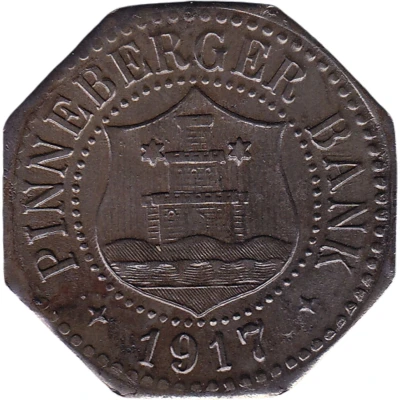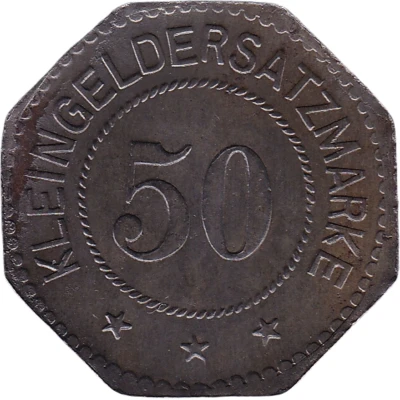


© gyoschak (CC BY-NC-SA)
50 Pfennigs - Pinneberg
1917 year| Iron | 3.5 g | 24.0 mm |
| Issuer | City of Pinneberg (Prussian province of Schleswig-Holstein) |
|---|---|
| Issuing bank | Pinneberger Bank |
| Emperor | William II (Wilhelm II) (1888-1918) |
| Type | Standard circulation coin |
| Year | 1917 |
| Value | 50 Pfennigs (50 Pfennige) (0.50) |
| Currency | Mark (1914-1924) |
| Composition | Iron |
| Weight | 3.5 g |
| Diameter | 24.0 mm |
| Thickness | 1.1 mm |
| Shape | Octagonal (8-sided) |
| Technique | Milled |
| Orientation | Medal alignment ↑↑ |
| Demonetized | Yes |
| Updated | 2024-10-04 |
| Numista | N#17322 |
|---|---|
| Rarity index | 86% |
Reverse
Pearl rim, legens surrounding rope circle with denomination centered
Script: Latin
Lettering:
KLEINGELDERSATZMARKE
50
★ ★ ★
Edge
Plain
Comment
Issuing body: [Bank, Schleswig-Holstein].Interesting fact
One interesting fact about the 50 Pfennigs - Pinneberg 1917 coin is that it was issued during a time of economic turmoil in Germany, known as the "Inflationary Period" (1914-1923), when the value of the German mark plummeted, and the prices of goods and services skyrocketed. To combat this issue, the government introduced a new currency, the "Notgeld" (emergency money), which included coins like the 50 Pfennigs - Pinneberg 1917, made of iron and with a low denomination, to help alleviate the economic burden on the population.